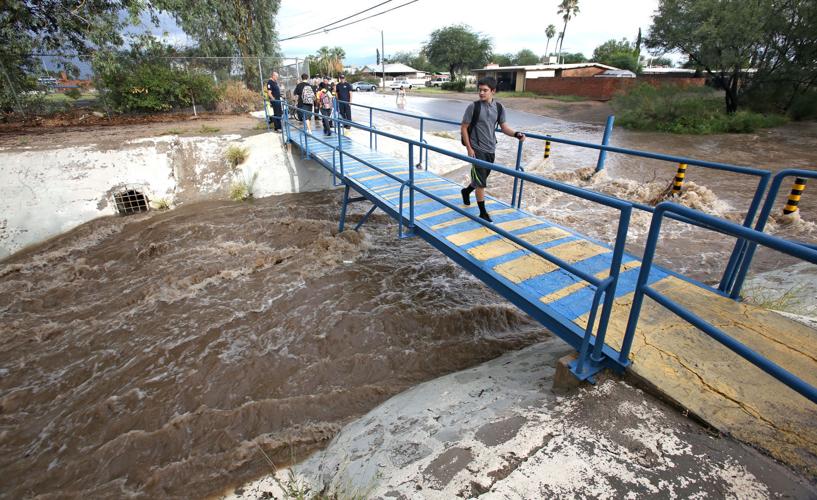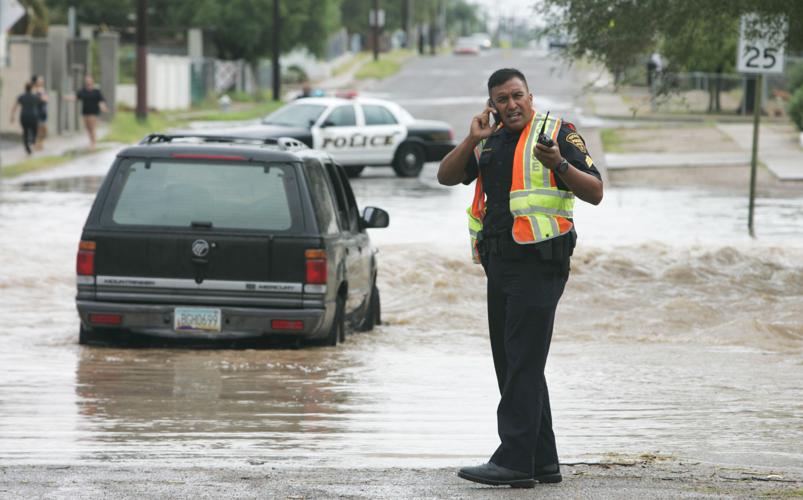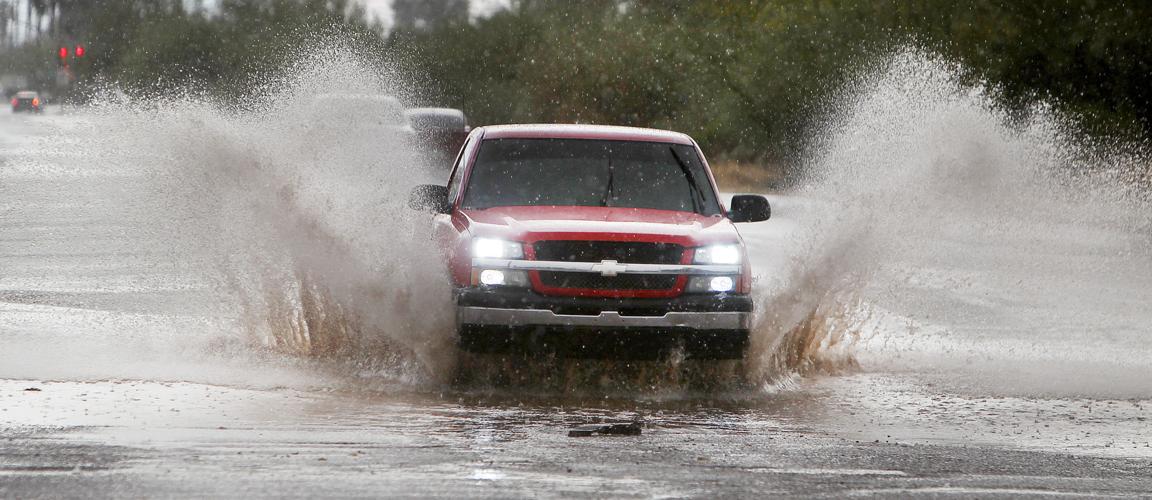Deep in a 700-page report, now 21 years old, city planners identified 47 projects prone to flooding after major storms.
On that list were some of the same streets that flooded during the recent July 1 downpour, which swamped more than 50 homes and businesses and caused an estimated six figures’ worth of damages. They’re the same streets that flood again and again after major summer rainstorms.
It would have cost $56 million in 1995 to address the flooding problems in that report — yet only 13 projects were ever started, and only a handful were completed. Now the price tag for those same projects is closer to $100 million.
The reason the fixes were never made: Street improvements are expensive and they benefit only a small number of homeowners and businesses. Plus, flooded streets typically dry out after a few hours, so fixing them stays fairly low on the list of priorities when local governments decide how to spend their limited dollars.
Tucson City Councilman Steve Kozachik says Pima County’s flood-control district, which administers projects through the county and includes representatives from area municipalities, hasn’t done enough to help the city even though city taxpayers make up 42 percent of the county’s tax base.
He estimates the city has received $20 million to $25 million in county flood-control funds over the last two decades. Based on the number of residents, the flood-control district should spend $5 million to $6 million a year on projects inside city limits, he said.
Pima County Administrator Chuck Huckelberry says Kozachik is trying to make puddles into ponds.
“There is a huge difference between stormwaters and floodwaters,” Huckelberry says. Most of the projects Kozachik cited in a recent newsletter to his constituents were for street drainage, Huckelberry says. Typically, the flood-control district does not make street-drainage improvements.
The Legislature required that each county create a flood-control district in 1978, after a major flood of the Salt River in Phoenix.
Secondary property taxes fund the districts, which are tasked with minimizing damage caused by major floods.
The city has a seat on Pima County’s flood-control board, and Huckelberry says city officials have always been able to suggest projects.
But he labels the 2-decades-old document Kozachik is citing as nothing more than a pipe dream.
“Anybody can develop a wish list,” he says.
The district already prioritizes projects that can do the most good for the least cost, Huckelberry says.
The midtown Arroyo Chico Project, he notes, has three large detention basins that help minimize stormwater runoff further downstream.
The project spans roughly six miles of the Arroyo Chico Wash, also known as Tucson Arroyo, running from Alvernon Way to the Santa Cruz River near St. Mary’s Road.
The project was identified as the top priority in the 1995 study.
“Our emphasis is always going to be in true flood reduction and flood-hazard reduction,” Huckelberry says.
But Huckelberry and Kozachik seem to have found some common ground.
Huckelberry says the flooded streets are more than just an inconvenience and agrees several projects on the list would qualify for funding from the flood district.
He notes the district has taken on a number of projects inside the city limits.
“For Fiscal Year 2016/17 alone, we have the construction start of the Pantano Wash Bank Protection Project from Tanque Verde Road to Fort Lowell Park, a $9,800,000 project; Rillito River Channel Flow Conveyance improvements through sediment removal at $800,000; and the Santa Cruz River, 22nd Street to Grant Road flow conveyance improvements to remove from the floodplain critical downtown properties adjacent to the Santa Cruz River at a cost of $1,700,000,” he wrote. “That is a total of $12.3 million this fiscal year alone.”
The county administrator has agreed to take a fresh look at the city’s requests.
Kozachik, for his part, concedes the city needs to do a better job of advocating for city projects within the flood district.
Tucson City Manager Mike Ortega says he is developing a list of projects to bring to the county in the next few weeks and will ask the flood-control board to consider them.
Ortega is optimistic that a new push by the city can help to deliver measurable results over the next few years.






